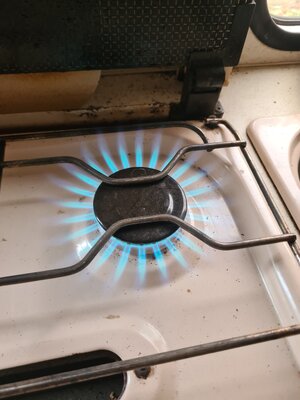- Dec 31, 2020
- 12
- 8
- 1,515
Suddenly the flame on my cooker has got very strong / big. Seems like much more propane gas is coming through. Up to now the flame has been completely normal. Now much more noisy too. Now the low setting is a bigger flame than high was before. Tried another bottle but was the same big flame. Is this a faulty regulator?
Thanks
Mike

Thanks
Mike

Last edited:

